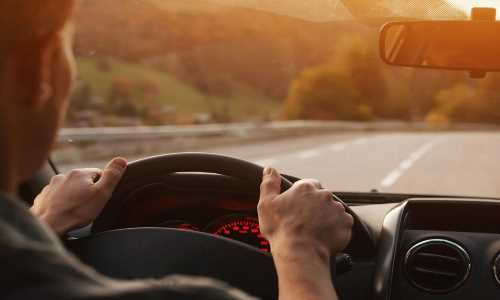How Do I Drive Safely on Local Roads and High-traffic Areas?
 By
By
With 1.3 million traffic fatalities each year, the open road can seem anything but friendly. And if you're a regular driver with a commute and errands to run, you may be looking for ways to be a better driver. Whether you're driving on highways or congested urban streets, it never hurts to brush up on your safe driving skills.
Are you wondering, "How do I drive safely for years to come?" You've come to the right place to find out. Read on to learn some tips and tricks!
Follow the Rules on the Road
When you took your driver's test, you had to obey the posted speed limits and other rules of the road. Just because you're several years removed from that experience doesn't mean you can disregard the rules. Be sure that you're driving according to the laws so you can avoid accidents.
For instance, make sure that you're always coming to a full stop at stop signs. Don't do a rolling stop and then quickly accelerate. Other cars at a four-way stop may find this action confusing and not know if it's their turn to proceed or not.
In addition, follow the posted speed limits on local roads. In neighborhoods, the speed limits will be lower to accommodate pedestrian traffic. You'll need to be vigilant and look for children, animals, and bicycles in any residential areas.
When a school bus stops and shows a red stop sign, obey it. Even if you're late to a meeting, it's never worth the risk of trying to drive around a bus, as children may be crossing the road. Wait until the bus stops blinking and the stop sign folds back into place before hitting the gas pedal.
Even with higher speed limits for highway driving, you'll want to avoid speeding on these roads, as well. Driving faster than the posted limit means you may lose control more easily. And you won't be able to brake quickly if a car or truck around you slows down.
Some signage may indicate that u-turns and turns during red lights are illegal. Those rules are there for a reason. When in doubt, heed the instructions on any signs!
Stay Away from Distractions
Driving can come with its share of distractions, but it's your responsibility to avoid them. If you are driving with passengers, for instance, let them know if the volume level gets too high or if you need to focus. Or if you have kids, travel prepared with games and books to help keep them occupied while you're driving.
If you have your phone with you, avoid using it while driving. Texting and driving is one of the most dangerous decisions you can make. It takes your attention away from the road and requires that you're using at least one hand.
Consider silencing your phone or setting an automated message to avoid the temptation to check it. You may want to keep your phone affixed to your dashboard to help with navigation. This is a hands-free option that can be safer, but you'll still want to stay away from reading texts.
When you're on a road trip or dealing with a busy day, you may want to eat while driving. This activity may seem innocent enough, but it, too, can end up causing an accident. And even after you've recovered from an accident, you still may be coping with chronic pain and the resulting medical bills.
You're better off pulling to the side of the road to take a break and eat. You won't be fumbling around for food while trying to steer the wheel.
Additionally, you should avoid messing with the radio or music controls while driving. Set up a playlist before you hit the road. And if you have a passenger with you, ask them to change the station or pull up a new song.
Scan Your Environment
Forming a habit of confident driving translates to being more aware of your surroundings. In other words, you need to let your eyes constantly scan the environment around you. Don't fixate on the car or pavement in front of you.
A car traveling in the opposite direction could start changing lanes unexpectedly. Or perhaps an animal will enter your field of vision. When you're looking to the right and left as you drive, you may be able to react more quickly to these surprises.
Likewise, you'll want to be on the lookout for other distracted drivers. Drunk drivers or distracted drivers could swerve into your lane. You'll want to be able to slow down and avoid them.
On highways, look for merging traffic. You may need to hop into the next lane to avoid a side collision and let the other car enter. Or if you're the one merging, check your mirrors and use a turn signal to announce your presence.
It's a good rule of thumb to keep some distance between your vehicle and the one in front of it. Avoid tailgating cars since they may need to stop suddenly. And be patient when you encounter slow-moving vehicles on the road.
Use Your Car's Features Properly
Your car is equipped with features that can make you a safer driver. As the car operator, it's your responsibility to know how to use them. And, of course, you'll want to use them properly when needed.
Start by putting your turn signals to use each time you hit the road. Don't assume that cars will know you plan to make a turn.
It's common for drivers to neglect to flip on a turn signal. This can trigger a chain reaction of problems, especially if there is a car following you at close range.
Not using a turn signal means you're failing to alert other cars to your intended actions. You risk causing a rear-end collision that could result in damage or far worse consequences. You may need to contact AlphaAccidentLawyers.com as a result.
If you are in an accident or need to pull over, use your blinkers. The blinkers communicate that you may be driving at a slower speed. They also provide a visual signal for other cars to provide plenty of clearance.
Turn on your lights at all times of the day to make your car more visible on the road. Use them at night, but also use them during the day.
And, of course, always wear your seatbelt when driving. If you are in an accident, a seatbelt acts as a restraint to keep you from flying through the windshield. Any minor discomfort is worth it if you can save your life!
Also, use all of your mirrors — especially when merging into traffic or changing lanes. Check your side mirrors and blind spots. And look in your rearview mirror so you're aware of any speeding traffic or other problems behind you.
Equip Your Car with Safety Resources
Do you have a first aid kit in your car? And do you have seasonal gear like a heavy winter coat and cat litter? These items are essential safety resources, and you should make sure your car is stocked with them.
When the weather turns colder, you'll want an extra winter layer in the car. After all, if you're stranded by the side of a desolate road, you could be waiting a while for help. You don't want to get hypothermia or worse if you're unable to access warmth.
In the winter, you may be dealing with bad traction on the roads, too. Keeping a container of kitty litter can come in handy if you're unable to exit a parking spot and find yourself churning your wheels in the snow. Sprinkle some kitty litter on the ground to provide some traction so you can get your car moving.
On the other hand, if you're driving and encounter flash floods during warmer weather, you'll need different safety tools at your disposal. Keeping a window glass breaker in your front console could be a lifesaver if you're trapped in a flooded car and need to get out.
And be sure you have a first aid kit in your car. It should come with bandages, gauze pads, and an ointment to clean and sterilize the wound. Also, be sure it's stocked with sterile gloves, adhesive tape, and a manual.
If you purchased a first aid kit a while ago, it's worth checking its expiration date. Since most kits expire after five years, you may need to upgrade yours.
Maintain Your Car
Another significant component of safe driving is routine car maintenance. Without it, your car's parts may wear down to the point where they can be a driving hazard. Make sure you allocate part of your budget to go toward essential car maintenance.
Schedule oil changes at the recommended intervals and ask the maintenance team to evaluate other critical parts of your car. Oil changes help ensure your car engine is lubricated so it doesn't become overheated when driving. At the same time, you'll want to make sure that fluid is not leaking from your car anywhere.
Get your belts and hoses checked to see if they are becoming worn down. If they snap on the road, you could lose control of your vehicle. Similarly, ask maintenance technicians to check for evidence of corrosion around your car's battery and other parts.
Brakes are a critical feature of your car, too, so you'll want to have them checked. Brake pad wear can extend your stopping time, putting you at risk if you need to slam the brakes. Do occasional checks by applying the brakes to test for stopping time, and be alert to unusual noises.
Finally, don't overlook your tires. Over time, the tread on your tires will wear down, and it may do so unevenly. This can cause reduced traction and even worse problems on the road.
Uneven tire wear could cause a tire to rupture while driving. If you're not in full control of your vehicle at the time, you could swerve and hit another car. A good mechanic will be able to tell you how much life is left in your tires.
While vehicle maintenance may feel like a nuisance at times, it pays in the long run. Your vehicle will be safer to drive. You'll also help keep it running longer.
Pay Attention to Weather Changes
Finally, don't overlook how weather can impact driving conditions. Even the safest and most vigilant driver will struggle on slippery roads or when visibility is low. And if you live in a snowy climate, you'll need to be aware of black ice and deep snow.
But even when snow and ice aren't a seasonal threat, you can find hazardous driving conditions in the summer. Summer storms can come with strong winds that may push you into another lane or cause trees and powerlines to fall into your path. Do not attempt to drive over these areas or move any live wires yourself.
In the same vein, stay away from flooded areas. Even flooded areas that appear to be shallow may actually be deeper than they appear. You could find yourself stuck in water without anyone nearby to help you get to safety.
Worse yet, flooded areas can get deteriorate quickly if more rain moves through the area. You may find that you and your car are swept away by the current in the event of a flash flood.
How Do I Drive Safely?
Still wondering, "How do I drive safely?" When you're a vigilant driver and make use of your car's safety features, you'll be on track to have a safe drive. Be alert to your surroundings, maintain your car, and follow the rules of the road.
When you need more tips to power confident driving, check
back soon for fresh and informative articles.






